Reviews: Read What Others Are Saying: page 76
215 ★★★★★ reviews
148 ★★★★★ reviews
91 ★★★★★ reviews
134 ★★★★★ reviews
The Magic Pendulum
Overall customer rating: ★★★★★reviewed by Phil Reda (confirmed purchase)
Rating: ★★★★★ (Date Added: Wednesday 11 March, 2015)
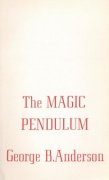 This is a great little book. Shows you how to take standard Mentalism effects and incorporate a pendulum. The effects build one onto the other though I would not perform all of them in one sitting.
This is a great little book. Shows you how to take standard Mentalism effects and incorporate a pendulum. The effects build one onto the other though I would not perform all of them in one sitting.
Black Art: a DIY version
Overall customer rating: ★★★★★reviewed by Chris Somerville (confirmed purchase)
Rating: ★★★★★ (Date Added: Wednesday 11 March, 2015)
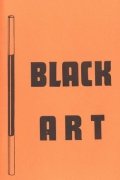 This book is a great disappointment. It is called Black Art: a DIY version. It certainly isn't going to help anyone to do it themselves. Actually the authors have a very superficial knowledge of the subject. Also what little information is included is badly out of date. For example while the Black Theatre of Prague are mentioned in the blurb the Black Art technique they employed is never mentioned in the book. Probably the authors never knew about it and so can be excused. But surely the publisher should, if claiming this a DIY booklet, should have made some attempt to bring it up to date.
Black Art originally used a totally black stage with all white props and a performer dressed in white. He was assisted in his magic by secret assistants dressed in black velvet costumes, and with black velvet coverings for white props which were to appear. The invisibility of the black on black principle was ensured by the whole proscenium being covered with light bulbs facing the audience, in other words the picture was framed with bright light. These lights were known as "blinders".
This book is a great disappointment. It is called Black Art: a DIY version. It certainly isn't going to help anyone to do it themselves. Actually the authors have a very superficial knowledge of the subject. Also what little information is included is badly out of date. For example while the Black Theatre of Prague are mentioned in the blurb the Black Art technique they employed is never mentioned in the book. Probably the authors never knew about it and so can be excused. But surely the publisher should, if claiming this a DIY booklet, should have made some attempt to bring it up to date.
Black Art originally used a totally black stage with all white props and a performer dressed in white. He was assisted in his magic by secret assistants dressed in black velvet costumes, and with black velvet coverings for white props which were to appear. The invisibility of the black on black principle was ensured by the whole proscenium being covered with light bulbs facing the audience, in other words the picture was framed with bright light. These lights were known as "blinders".
A later development by the Black Theatre of Prague and other puppet companies was to do away with the "blinders" or illuminated proscenium. They too used black clad assistants and black covers for vanishes and appearances, but the technique was subtly different. Very narrow beamed spotlights were shone across the stage from the wings, creating a side-to-side curtain of light. The black clad assistants stood behind this curtain and pushed anything to become visible into the light from behind. This method of lighting became possible due to the improvement in stage lighting equipment and lenses to control the beam shape and profile. It had the great advantage of allowing coloured props and costumes rather than the all white necessity of the earlier system.
Another technique used, sometimes on its own and sometimes additionally, was Black Light. This used Ultra Violet lamps which gave out virtually no visible light, but which made objects or costumes treated with uv paints or dyes glow vividly on an all black stage.
All this information is non existent in this book. But even judging it on the technique it does purport to cover, Black Art using "blinders", it is sadly lacking in any D.I.Y. information. For example there is no mention of the type of the lamps to use, of how many or how bright - essential information if you want the effect to work. Nor is there any discussion of the use of black velvet which, because it has a slight pile or nap, has to be hung one particular way when it looks dead black. Hang it the wrong way and the black art effect just doesn't work. (Many magicians making a square circle production box, or constructing a black art well in a table, have discovered this the hard way.)
Personally I doubt whether the authors had any personal experience of presenting a Black Art act. I think their ideas are pipe dreams. That is not to say that they are without value ... but the value is slight in that they can only be used if you already have the knowledge that the book fails to deliver.
The Vampire Effect: how to cast no reflection
Overall customer rating: ★★★★★reviewed by David Burbury
Rating: ★★★★★ (Date Added: Tuesday 10 March, 2015)
 Totally agree with Christian Taylor, was totally disappointed when I read it, its very hyped up in the description and falls very flat when you read the "method". not recommended
Totally agree with Christian Taylor, was totally disappointed when I read it, its very hyped up in the description and falls very flat when you read the "method". not recommended
Pocket Riser
Overall customer rating: ★★★★★reviewed by John R Anderson (confirmed purchase)
Rating: ★★★★★ (Date Added: Tuesday 10 March, 2015)
 Great trick and a great value for the price! Similar tricks are on the market and are very expensive. The video delivers exactly what is promised. The guy on the video is easy to understand and steps are easy to see and do. I made the gimmick in less than an hour. Highly recommended to the magician looking for a super close-up/walk around/table trick that plays big and packs small.
Great trick and a great value for the price! Similar tricks are on the market and are very expensive. The video delivers exactly what is promised. The guy on the video is easy to understand and steps are easy to see and do. I made the gimmick in less than an hour. Highly recommended to the magician looking for a super close-up/walk around/table trick that plays big and packs small.
The Prototypes of the Everymen of Magicians (a parody)
Overall customer rating: ★★★★★reviewed by Ilse-Marie
Rating: ★★★★★ (Date Added: Saturday 07 March, 2015)
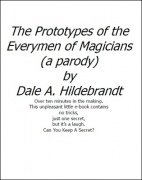 Worth every penny! They really should charge something for this. The biggest secret you will ever learn. But please don't tell it to ANYBODY!
Worth every penny! They really should charge something for this. The biggest secret you will ever learn. But please don't tell it to ANYBODY!
Gems of Mental Magic
Overall customer rating: ★★★★★reviewed by David Nicholson (confirmed purchase)
Rating: ★★★★★ (Date Added: Thursday 05 March, 2015)
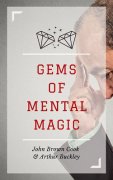 I really enjoy mining through old magic books to find Gems and this book is a real delight. There are many principles within this old book used in modern magic today which are a joy to discover and fuel your creativity to adapt them to your own magic and mentalism.
I really enjoy mining through old magic books to find Gems and this book is a real delight. There are many principles within this old book used in modern magic today which are a joy to discover and fuel your creativity to adapt them to your own magic and mentalism.
Very often when I am playing with an idea and need a solution to make the effect work I will quite often find the answer lies in adapting principles already firmly established.
Yes a lot of the effects are to be used with confidents and stooges but not all! However read between the lines ...discover those gems and adapt them to fit your modern audience. Everything old is new! This book is a minefield .....enjoy.
Nic Holson
Killing Classics 1
Overall customer rating: ★★★★★reviewed by Paul Lelekis
Rating: ★★★★★ (Date Added: Wednesday 04 March, 2015)
 This e-book from Jozsef is a fantastic book of "keepers"! I love the way Jozsef takes classic effects and brings them into the 21st century - lots of interaction, no wasted or extra moves and makes these effects truly enjoyable for the spectators! Buy this e-book. TRUST ME...you will NOT be sorry! Great MAGIC!
This e-book from Jozsef is a fantastic book of "keepers"! I love the way Jozsef takes classic effects and brings them into the 21st century - lots of interaction, no wasted or extra moves and makes these effects truly enjoyable for the spectators! Buy this e-book. TRUST ME...you will NOT be sorry! Great MAGIC!
Impossible Foldings Volume 1
Overall customer rating: ★★★★★reviewed by Paul Tutherow
Rating: ★★★★★ (Date Added: Monday 02 March, 2015)
 I saw one of the impossible objects from volume 2 and was immediately intrigued. I decided to start with this volume and work my way through the series. I was concerned that there is no written instruction and this is only a video. I believe later volumes have appendix files, but this one was only the video explanation.
I saw one of the impossible objects from volume 2 and was immediately intrigued. I decided to start with this volume and work my way through the series. I was concerned that there is no written instruction and this is only a video. I believe later volumes have appendix files, but this one was only the video explanation.
The video included plenty of detail and I had folded my first impossible object within minutes of viewing. There are three models demonstrated. The first is interweaving two bills. Although the completed model appears very complex it was actually fairly simple to follow along. This is the only model of the three which uses more than one bill.
The second demonstration is the Inside-Out Bill which is difficult to explain. The basic model is demonstrated and can be made easily by following along as the demonstrator slowly walks through the process step-by-step. At the end of this segment several variations are displayed but instruction is not provided. It took me a while to replicate one of the variations but completing this on my own was very rewarding and once I had it I realized it was really as simple as the basic model.
I will point out that I practiced the variation on printer paper. This is not a good paper to practice on. Once I switched to the bill to make my model, it was much easier to manipulate. Of course, printer paper is cheaper.
The final segment was the pyramid which is pictured along side this product. It is very similar to the interwoven bill but it only uses one bill instead of two. Again, with the instruction it was not difficult to complete at all.
Overall the value for this product is very high. The instruction is details and the models are simple enough anyone should be able to complete something within a few minutes. Attempting to work out the variations on the second model adds value to this package.
I would happily recommend this video to anyone interested in learning more about Impossible Folds. I will be purchasing the next video in this series soon.
~Paul Tutherow
The Art of Magical Entertainment
Overall customer rating: ★★★★★reviewed by Enrico Varella
Rating: ★★★★★ (Date Added: Sunday 01 March, 2015)
 This is a book of ‘workers’ for the Worker.
This is a book of ‘workers’ for the Worker.
Seven strong effects and one rich essay grace the latest book by Paul Lelekis, an experienced professional performer. You may know Paul from his extensive and enthusiastic contributions to The Linking Ring magazine, as well as for his previous e-books. As a bonus, Dan Tong contributes his own renowned Egg Bag routine. You will require basic to intermediate level of skills to perform these effects, however it should be within your range of practice.
Raise your performance game with the approach of ‘choreographed, interactivity and having fun with spectators’. Many useful performance tips are shared, as Lelekis generously shares his tacit wisdom and experience. You may even succeed with more tips as a strolling performer in a restaurant or private function.
Each item is a ‘worker’ (to express a term, popularised by Michael Close), including the offbeat pencil levitation. However, more importantly, this e-book is about presenting magical performances that benefits the performer, client, and the audience. I single out ‘Fair Play’ for its simplicity and involving the spectator in the miracle. In the ‘Laws of Attraction’, the Gilbreath Principle is put to good use in a deck separation process that minimizes the procedure, by including purpose.
I recommend this book heavily, as it ‘packs small, but plays huge’!
Reviewed by Enrico Varella Vice-President, IBM Ring 115, Singapore Editor-At-Large, The Quantum Ring magazine
Handbook of Card Sleights
Overall customer rating: ★★★★★reviewed by William Lainsbury (confirmed purchase)
Rating: ★★★★★ (Date Added: Tuesday 17 February, 2015)
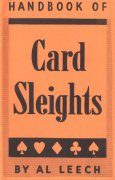 This is a fine book that contains some excellent moves and methods. The instruction is clear and concise. I had an original copy and am pleased to see it back. It is one rung of the magical ladder you Must have.
This is a fine book that contains some excellent moves and methods. The instruction is clear and concise. I had an original copy and am pleased to see it back. It is one rung of the magical ladder you Must have.
Billy Benbo 2015
The Making of Playing Cards
Overall customer rating: ★★★★★reviewed by Paul Budd (confirmed purchase)
Rating: ★★★★★ (Date Added: Friday 13 February, 2015)
 Although little more than a pamphlet, this is an engaging little read, honestly it is!! Neat illustration and discussions on the early days of playing cards. Lots of bits about the paper, glue and other materials commonly used. I liked this one!!
Although little more than a pamphlet, this is an engaging little read, honestly it is!! Neat illustration and discussions on the early days of playing cards. Lots of bits about the paper, glue and other materials commonly used. I liked this one!!
Gobbledygook
Overall customer rating: ★★★★★reviewed by Ray Ouellette (confirmed purchase)
Rating: ★★★★★ (Date Added: Wednesday 04 February, 2015)
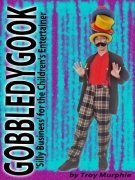 A very nice compilation of some different gags and business for the kid's show performer. Not your run of the mill gags you have heard a million times but some really nice ideas in this little book. I particularly like the lolly bag gag and letter from Santa. Well done!
A very nice compilation of some different gags and business for the kid's show performer. Not your run of the mill gags you have heard a million times but some really nice ideas in this little book. I particularly like the lolly bag gag and letter from Santa. Well done!
The Transparent Cups
Overall customer rating: ★★★★★reviewed by Ray Ouellette (confirmed purchase)
Rating: ★★★★★ (Date Added: Wednesday 04 February, 2015)
 What an excellent routine! Extremely visual and the DVD explains it all thoroughly - even though there is English voice over, it is very easy to follow along. Great price as well. I have seen Paul Daniel's chop cup routine as well as a live performance by Mr. Paul Gertner that used steel ball bearings for the balls. Both of those routines are amazing. This one is right up there as one of my favorites and I cannot wait to be able to perform this. You won't be disappointed with this one!
What an excellent routine! Extremely visual and the DVD explains it all thoroughly - even though there is English voice over, it is very easy to follow along. Great price as well. I have seen Paul Daniel's chop cup routine as well as a live performance by Mr. Paul Gertner that used steel ball bearings for the balls. Both of those routines are amazing. This one is right up there as one of my favorites and I cannot wait to be able to perform this. You won't be disappointed with this one!
Piddington's Secrets: We know How They Did It!
Overall customer rating: ★★★★★reviewed by Brian Lawrence
Rating: ★★★★★ (Date Added: Saturday 31 January, 2015)
 When I first started to read this book it was to glance at what to expect, however I could not put it down. The author takes us on a fascinating 'page-turner' trip inside the mind of Sydney Piddington and reveals where, when, why and how he created the most baffling two-person telepathy illusion magic has ever known. No stone is left un-turned and the surprises never stop. Although it reveals the methods used by the Piddingtons, it offers so much more. The author shows how his own family crossed paths with the Piddingtons and how this encounter helped with the magic. In my opinion, this is the most amazing revelation magic has ever seen and if I could recommend an award for best history-of-magic book, Piddington's Secrets would win hands-down.
When I first started to read this book it was to glance at what to expect, however I could not put it down. The author takes us on a fascinating 'page-turner' trip inside the mind of Sydney Piddington and reveals where, when, why and how he created the most baffling two-person telepathy illusion magic has ever known. No stone is left un-turned and the surprises never stop. Although it reveals the methods used by the Piddingtons, it offers so much more. The author shows how his own family crossed paths with the Piddingtons and how this encounter helped with the magic. In my opinion, this is the most amazing revelation magic has ever seen and if I could recommend an award for best history-of-magic book, Piddington's Secrets would win hands-down.
A Topological Trio
Overall customer rating: ★★★★★reviewed by William Lainsbury (confirmed purchase)
Rating: ★★★★★ (Date Added: Saturday 31 January, 2015)
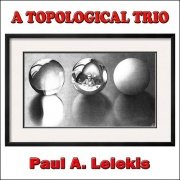 Though T&R is well thought out it is almost identical to HOODWINKS version from the Abra series in the 60's. Doug Hood used MELROSE which meant that ANY card could be used with any OTHER card. This is the version I have used for 40+ years and as it does not require extensive preparation is the one I will continue with.
Though T&R is well thought out it is almost identical to HOODWINKS version from the Abra series in the 60's. Doug Hood used MELROSE which meant that ANY card could be used with any OTHER card. This is the version I have used for 40+ years and as it does not require extensive preparation is the one I will continue with.
Afghan bands is a classic and this routine is a top liner for kids who can handle scissors...too much work for most magicians...which suits me fine.
Time Warp is another from way back and again this version almost images that shown to me by Ralf Wichman (Braco)...for those NOT familiar with magic of the past...You won't waste your cash.
Billy Benbo 2015
DIY I-Pad: Do It Yourself Impression Pad
Overall customer rating: ★★★★★reviewed by William OConnell
Rating: ★★★★★ (Date Added: Friday 30 January, 2015)
 DIY I-Pad by Scott Creasey is outstanding. In less than 15 minutes, Scott shows and explains how to make the DIY I-Pad with simple, easy-to-follow steps. The remaining 16 minutes are devoted to handling and routines. I really like this download and the pad, and will never again have to purchase an expensive impression pad! The handling and the p**k are Scott teaches are so good. No more worries about a 'quick' p**k or unnatural, awkward moves. In classic Scott Creasey style, the handling and routines are very well thought out and proven workers.
DIY I-Pad by Scott Creasey is outstanding. In less than 15 minutes, Scott shows and explains how to make the DIY I-Pad with simple, easy-to-follow steps. The remaining 16 minutes are devoted to handling and routines. I really like this download and the pad, and will never again have to purchase an expensive impression pad! The handling and the p**k are Scott teaches are so good. No more worries about a 'quick' p**k or unnatural, awkward moves. In classic Scott Creasey style, the handling and routines are very well thought out and proven workers.
Gobbledygook
Overall customer rating: ★★★★★reviewed by Troy Murphie
Rating: ★★★★★ (Date Added: Monday 26 January, 2015)
 The One Star review in my opinion is ‘weak judgment’. Book was released on the 1st January, negative review placed on the 2nd. From this it’s clear the reviewer didn’t have the decency to trial my ideas before an audience before commenting. I have successfully used these clownish ideas for years in my kid’s shows. To prove they work, I have even included video clips with this E-book showing some of the material performed before a live audience. At the end of the day everything depends on the ability of the performer to successfully get things across. What’s Gold in one person’s hand is Tin in another’s.
The One Star review in my opinion is ‘weak judgment’. Book was released on the 1st January, negative review placed on the 2nd. From this it’s clear the reviewer didn’t have the decency to trial my ideas before an audience before commenting. I have successfully used these clownish ideas for years in my kid’s shows. To prove they work, I have even included video clips with this E-book showing some of the material performed before a live audience. At the end of the day everything depends on the ability of the performer to successfully get things across. What’s Gold in one person’s hand is Tin in another’s.
Table-Hopping Cups and Balls
Overall customer rating: ★★★★★reviewed by William Lainsbury (confirmed purchase)
Rating: ★★★★★ (Date Added: Wednesday 14 January, 2015)
 Clear, concise, compact and effective. This routine is easily extended, or incorporated, into other set pieces. To appreciate the nice flow you need the props in hand as you run through each phase. Nice job Scott. This one will be used, and often.
Clear, concise, compact and effective. This routine is easily extended, or incorporated, into other set pieces. To appreciate the nice flow you need the props in hand as you run through each phase. Nice job Scott. This one will be used, and often.
Billy Benbo 14.01.2015
Brain Bracking
Overall customer rating: ★★★★★reviewed by Thomas Jones (confirmed purchase)
Rating: ★★★★★ (Date Added: Thursday 08 January, 2015)
 This is an interesting variation of the thought of word effect. Be forewarned that this probably won't work for close up but it will work really well for stage or parlor.
This is an interesting variation of the thought of word effect. Be forewarned that this probably won't work for close up but it will work really well for stage or parlor.
Three Travelers
Overall customer rating: ★★★★★reviewed by Xavier Serra (confirmed purchase)
Rating: ★★★★★ (Date Added: Wednesday 07 January, 2015)
 Last statement of the effect description says: "This routine uses BASIC card techniques". Well, I presume the word "basic" can be very subjective… Disappointed by another misleading description.
Last statement of the effect description says: "This routine uses BASIC card techniques". Well, I presume the word "basic" can be very subjective… Disappointed by another misleading description.
Encore 3
Overall customer rating: ★★★★★reviewed by Phil Reda (confirmed purchase)
Rating: ★★★★★ (Date Added: Saturday 03 January, 2015)
 This should be called Ammar and Friends. The contributor list reads like a Who's Who lost in the world of close up magic. There is a gold mine of effects between the covers - something for everyone. My favorite is the $2 Bill Tear - I have carried this in my wallet for over 15 years now and is one of my favorite effects. This effect alone is worth the price of the manuscript. Another great effect and one Michael used on Merve Griffen is the "Cards to Case". This is a great opener for a card set and easy to do (no gimmicks) "Coins thru silk" Michael takes an old trick and makes into a visually stunning piece of Magic. You will fool yourself as you watch the coins visually penetrate a see thru scarf. If your looking to learn the Hundred Dollar Bill switch or refine your technique on the one you do now - Roger Klause's Bill Switch is taught in great detail and drawings.
This should be called Ammar and Friends. The contributor list reads like a Who's Who lost in the world of close up magic. There is a gold mine of effects between the covers - something for everyone. My favorite is the $2 Bill Tear - I have carried this in my wallet for over 15 years now and is one of my favorite effects. This effect alone is worth the price of the manuscript. Another great effect and one Michael used on Merve Griffen is the "Cards to Case". This is a great opener for a card set and easy to do (no gimmicks) "Coins thru silk" Michael takes an old trick and makes into a visually stunning piece of Magic. You will fool yourself as you watch the coins visually penetrate a see thru scarf. If your looking to learn the Hundred Dollar Bill switch or refine your technique on the one you do now - Roger Klause's Bill Switch is taught in great detail and drawings.
Well written in the usual Ammar style very detailed and illustrated by Richard Kaufman - Can't go wrong at this price - highly recommended.
Gobbledygook
Overall customer rating: ★★★★★reviewed by Greg Phillips (confirmed purchase)
Rating: ★★★★★ (Date Added: Friday 02 January, 2015)
 Save your $10. Weak material. Wished I would have waited for reviews.
Save your $10. Weak material. Wished I would have waited for reviews.
IX
Overall customer rating: ★★★★★reviewed by Pi Gi
Rating: ★★★★★ (Date Added: Monday 22 December, 2014)
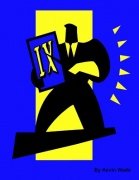 To perform this tricks the spectator has to do some calculation which make all look like just a magic trick for kids instead of a mentalism miracle. I'm extremely disappointed.
To perform this tricks the spectator has to do some calculation which make all look like just a magic trick for kids instead of a mentalism miracle. I'm extremely disappointed.
Test-Conditions Ring Penetration
Overall customer rating: ★★★★★reviewed by Phil Reda (confirmed purchase)
Rating: ★★★★★ (Date Added: Friday 19 December, 2014)
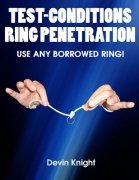 I just finished reading the manuscript for this effect. Do yourself a favor and add it to the cart. I am a huge Devin Knight fan and have most of his material. As in the usual Devin style the method is simple but diabolical. The instructions are very well written and all aspects of performance are gone over. All I can say is WOW!
I just finished reading the manuscript for this effect. Do yourself a favor and add it to the cart. I am a huge Devin Knight fan and have most of his material. As in the usual Devin style the method is simple but diabolical. The instructions are very well written and all aspects of performance are gone over. All I can say is WOW!
Good Luck From Beijing
Overall customer rating: ★★★★★reviewed by Paul Nightingale (confirmed purchase)
Rating: ★★★★★ (Date Added: Tuesday 16 December, 2014)
 Very nice, workable mental/psychic close-up routines. Excellent explanations and tricks. You get absolutely everything but a few cheap props that you make yourself. 'pentagram of protection' just wow!
Very nice, workable mental/psychic close-up routines. Excellent explanations and tricks. You get absolutely everything but a few cheap props that you make yourself. 'pentagram of protection' just wow!